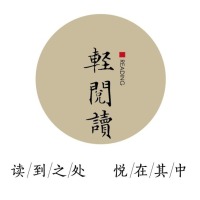In Depth: South China Sea Shipping Revealed by Big Data: The “Golden Artery” Linking the World

Amid profound changes in the global trade landscape, the Report on Shipping Safety and Development in the South China Sea (2025), released on October 24th, has unsurprisingly drawn widespread attention. The report integrates data from leading global providers, ship AIS trajectories, port information, and vessel technical parameters to present a comprehensive “map” of shipping in the South China Sea. It reveals that the South China Sea is not only one of the world’s busiest but also one of its most navigable maritime routes, and that China is both a guardian of peace and a key contributor to navigational safety and efficiency.
The report highlights three keywords, namely “super suture,” “material lifeline,” and “safe ballast,” vividly illustrating how the South China Sea serves as the shipping hub of global maritime networks. Through efficient coordination and extensive connectivity, it tightly stitches the global economy together. At the same time, with robust navigation oversight and service systems, it ensures the region’s safe, orderly, and prosperous operations. Moreover, by carrying a significant share of the world’s essential bulk commodities, it underpins the economic security of East Asia’s major energy consumers and profoundly influences global trade dynamics and supply chain resilience.
It is no exaggeration to say that the South China Sea is the world’s most dynamic golden artery, bar none.
Yet, with dozens of ports around the South China Sea, each with a long history but vastly different in capacity and development, how has this remarkable performance been achieved? In an era of global fragmentation, what risks typically challenge maritime supply chains? And what does the security of strategic bulk commodities mean for ordinary people? As trade protectionism rises, does this “golden artery” continue to grow in importance for global supply chain stability? To explore these questions, Voice of the South China Sea interviewed three leading experts: Hu Bo, Director of the Peking University Center for Maritime Strategy Studies and head of the South China Sea Strategic Situation Probing Initiative; Chen Jihong, Distinguished Professor at the College of Management, Shenzhen University, and President of the Shenzhen International Centre for Maritime Studies; and Liu Jiaguo, Professor at the School of Maritime Economics and Management of Dalian Maritime University.
“The Super Suture”:How Is the Global Trade Network Woven?
The answer lies in three steps: scale, efficiency, and security.
According to the Report, the vessel density in the South China Sea is 7.5 times that of the Caribbean, 3 times that of the Baltic Sea, and 1.5 times that of the Mediterranean. In other words, the economic value per unit of sea area here is far higher than in other regions, meaning more ships, more cargo, and higher returns. So how much of this success comes from natural advantages, and how much from human effort? Chen Jihong, Distinguished Professor at the College of Management, Shenzhen University, and President of the Shenzhen International Centre for Maritime Studies, believes that apart from its irreplaceable advantages as a geographical hub and a network with radiating influence, the South China Sea also boasts an unparalleled scale effect due to its high concentration of economic activities.
The region brings together seven countries, 29 major ports, and 14 major sea routes, forming an extensive and sophisticated maritime network. “This density has generated a remarkable scale effect,” Chen explains. “The deepening implementation of the Regional Comprehensive Economic Partnership (RCEP) has further strengthened these shipping routes. Top global shipping companies such as COSCO, Maersk, and MSC all regard the South China Sea as a core area of their global operations.”
The report’s data fully supports this view: the South China Sea accounts for 40% of global port calls and 30% of global container trade, making this “suture” of shipping routes a strategic and economic connector that reaches 67 countries and regions across six continents.
Another thought-provoking question is this: how has the South China Sea managed to form such an efficient port network despite the uneven levels of economic development among its surrounding countries? The Report highlights that the region operates under a multi-tier, high-efficiency network, with Singapore and Hong Kong serving as dual cores, supported by other major ASEAN ports and numerous feeder ports. This system has achieved higher vessel turnaround and cargo transshipment efficiency than most other maritime regions.
According to Professor Chen Jihong, technological empowerment, such as automated terminals and big data sharing platforms, has played a crucial role. The report’s data shows that between 2021 and 2024, the average transit time for vessels passing through the South China Sea dropped from 211.56 hours to just 33.17 hours, a reduction of over 80%.
Shipping is a highly commercialized industry, yet one that remains vulnerable to risks stemming from geopolitical tensions, natural disasters, piracy, terrorism, and market competition. As Professor Liu Jiaguo from the School of Shipping Economics and Management at Dalian Maritime University points out, “Such risks can lead to shipment delays and cost increases at best, or cause global supply chain disruptions at worst, severely affecting production and market supply.”
That’s why security has become the ballast stone holding together this “golden artery” of global trade. The Report notes that China has established a comprehensive maritime safety system in the South China Sea, including vessel traffic management, automatic identification systems, ship reporting protocols, professional pilotage services, and a three-dimensional emergency rescue network covering air, surface, and underwater operations.
Hu Bo, Director of the Peking University Center for Maritime Strategy Studies and head of the “South China Sea Strategic Situation Probing Initiative,” emphasizes the importance of recognizing the shared commitment behind this safety: “Most coastal countries are actively contributing to maritime safety. As the largest coastal state in the South China Sea, China has consistently acted as a responsible major power, providing more and more maritime public goods in areas such as navigation safety, disaster prevention and mitigation, and rescue operations.”
Safeguarding the Lifeline of Supplies Is Safeguarding People’s Sense of Security
One striking data point from the Report is that in 2023, nearly 76% of crude oil imports to China, Japan, and South Korea were transported through the South China Sea. The region also carried about 40% of global seaborne crude oil, 34% of natural gas, and 21% of soybean trade. But what do these numbers actually mean for ordinary people?
They represent a sense of everyday security. “Maritime security in the South China Sea is directly tied to every household’s electricity bill, fuel prices, and the cost of groceries,” said Professor Liu Jiaguo. He explained further: “The combined population of East Asia and ASEAN accounts for nearly 30% of the world’s total. These countries and regions rely heavily on the South China Sea for their energy and food supplies. Any disruption in shipping would trigger sharp fluctuations in global oil, gas, and grain prices, immediately driving up electricity, transportation, and food expenses for ordinary people.”
Chen Jihong added to this view from the perspective of the industrial chain: “In 2024, China’s iron ore imports accounted for nearly 80% of global trade, most of which were transported through the South China Sea. Its security is directly linked to downstream industries such as steel, automobiles, and construction.”
“This isn’t just an economic issue,” Liu emphasized. “Whether the South China Sea remains open and secure directly affects national energy security, food security, and overall economic resilience. For ordinary people, it ultimately means stable growth, manageable prices, and a steady society.”
When such a sense of security becomes something we take for granted, this Report serves as a mirror, reminding us what the South China Sea’s vitality and openness truly mean for the world today.
A Resilient “Golden Artery”: Greater Value Amid Uncertainty and Competition
The ongoing maritime rivalry between China and the United States has become a major focus of global media attention. According to some maritime consulting agencies, over 30% of international shipping vessels worldwide are expected to be affected. Professor Chen Jihong didn’t mince words in calling the U.S. policy of imposing additional maritime charges under the so-called Section 301 investigation “a move that harms others without benefiting itself.” “It will force shipping companies to reroute or break up existing routes, increasing operational costs such as fuel and time, which will ultimately be passed on to consumers,” he explained. The Report also points out that the South China Sea’s shipping network relies heavily on market-based cooperation, and any artificial disruption poses a real risk of reduced efficiency.
Faced with this complex situation, Professor Liu Jiaguo remains cautiously optimistic: “The maritime system has a certain degree of flexibility and resilience against geopolitical shocks. It can self-adjust through route optimization, industrial cooperation, and digital-intelligent technologies.” He added that if high tariffs persist for an extended period, global trade could become more regionalized and fragmented, but this would be both a challenge and an opportunity for China–ASEAN port and logistics cooperation. “Regional ports could take this chance to strengthen coordination and further consolidate the South China Sea’s role as the world’s ‘super suture’,” Liu said.
From a strategic perspective, Professor Hu Bo offered this insight: “In an era where deglobalization and unilateralism are on the rise, countries around the South China Sea should deepen maritime cooperation, setting an example for the world and leading the healthy development of the global shipping system.”
Data show that in 2024, the total trade value between China and ASEAN reached 6.99 trillion yuan, up 9.0%, accounting for 15.9% of China’s total foreign trade. The two sides have remained each other’s largest trading partners for five consecutive years. The South China Sea shipping network extends across six continents and connects 67 countries and regions worldwide. The global significance of this “golden artery” has yet to be fully recognized; safeguarding its prosperity means safeguarding the shared dream of development for all nations along its route.














